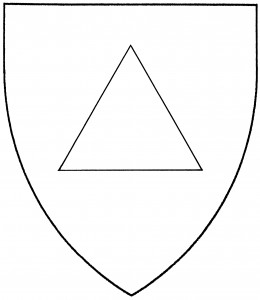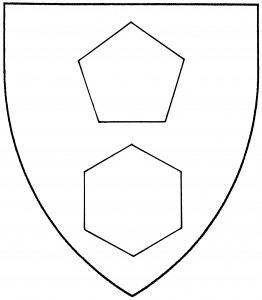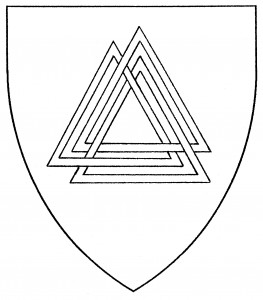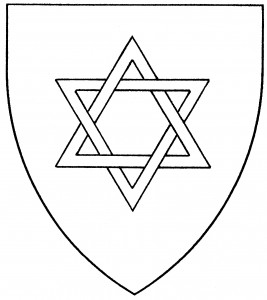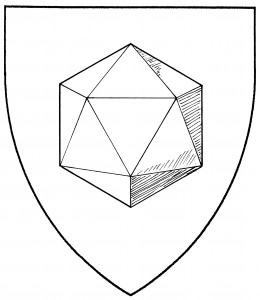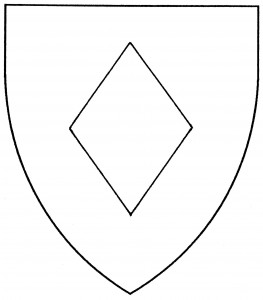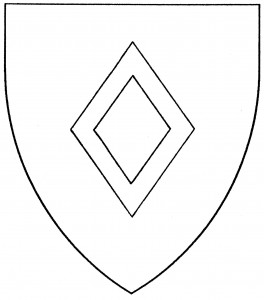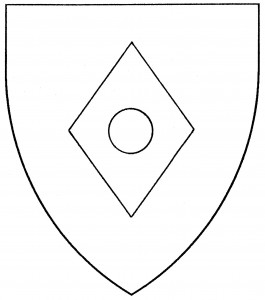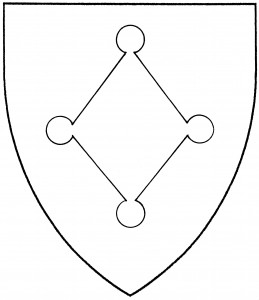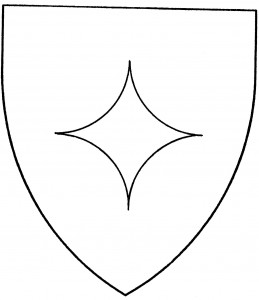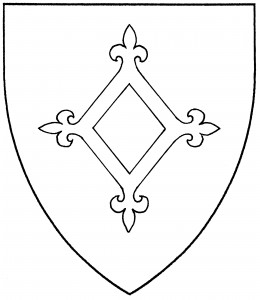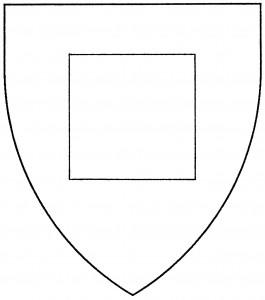A polygon is a closed geometric plane figure with straight sides. While there are some simple heraldic charges which might be described in this way – e.g., the billet and the delf – the term here refers specifically to abstract geometric shapes, not otherwise defined, and which don’t appear to represent actual objects. Of these, the most commonly found in period European armory is the “triangle”, seen in the allusive arms (Italian canto, “angle, corner”) of de Cantono, mid-15th C. [Triv 91].
The only other polygon found in period European armory (as of this writing) is the “octagon”: this appears to be unique to a single coat, the arms of Haller, mid-16th C. [NW 165]. Society armory also has examples of the “pentagon” and the “hexagon”. The pentagon and hexagon, while registerable, are deemed a step from period practice.
Polygons are normally drawn as regular polygons (i.e., equilateral and equiangular), though triangles are also found in isosceles forms. Most polygons have a point to chief by Society default; the exception is the octagon, which rests on a flat side and thus has a flat side to chief.
For related charges, see lozenge, polyhedron, star of David, valknut. See also jewelry.
Hraði inn rakki bears: Quarterly sable and gules, in bend sinister two triangles inverted Or.
Georg Eisenfaust bears: Per fess argent and sable, in chief a clenched gauntlet and in base three octagons two and one counterchanged.
Ottavio Corsi bears as a badge: Sable, a hexagon voided within another argent.
Uto von den Sümpfen bears: Sable, a pentagon gules fimbriated Or.
